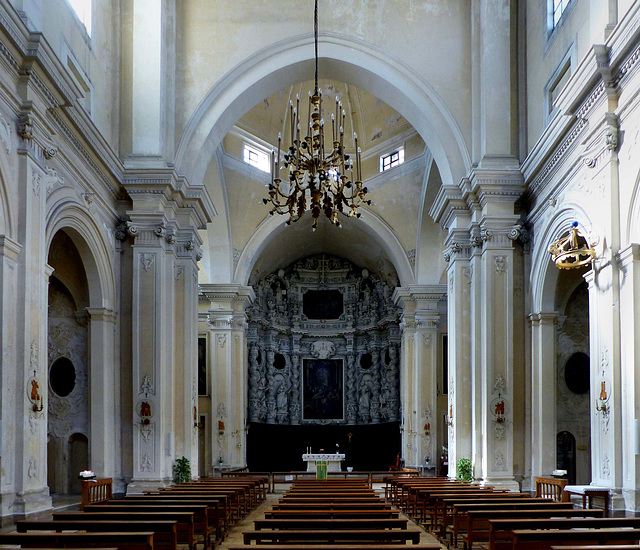Location
Lat, Lng:
Lat, Lng:
You can copy the above to your favourite mapping app.
Address: unknown
Lat, Lng:
You can copy the above to your favourite mapping app.
Address: unknown
See also...
Keywords
Authorizations, license
-
Visible by: Everyone -
All rights reserved
-
106 visits
Lecce - Chiesa del Gesù


A legend tells, that a city called Sybar existed at the time of the Trojan War. It was conquered by the Romans in the 3rd century BC, receiving the new name of Lupiae.
After the fall of the Western Roman Empire, Lecce was sacked by the Ostrogoth troops of king Totila. In 549 it was taken by Byzantium and remained part of the Eastern Roman Empire for five centuries, interrupted by brief invasions by the Saracens, Longobards, Hungarians and Slavs.
After the Norman conquest in the 11th century, Lecce regained commercial and political importance, flourishing in the subsequent Hohenstaufen and Angevine rule. From the 15th century, Lecce was one of the most important cities of southern Italy, and, starting in 1630, it developed into a centre of Baroque architecture. This was made possible by the soft tuff stone found in the area, perfect for that architecture.
-
The Chiesa del Gesù (aka "Madonna del Buon Consiglio") was built for the Jesuit order, who settled in Lecce in 1574. A year later the construction started following a design of the Jesuit Giovanni De Rosis, who came from Como.
The entire building is inspired by the Chiesa del Gesù in Rome, considered the Mother of the churches of the Jesuit order.
Somehow the interior of Baroque churches always seems a bit dusted.
After the fall of the Western Roman Empire, Lecce was sacked by the Ostrogoth troops of king Totila. In 549 it was taken by Byzantium and remained part of the Eastern Roman Empire for five centuries, interrupted by brief invasions by the Saracens, Longobards, Hungarians and Slavs.
After the Norman conquest in the 11th century, Lecce regained commercial and political importance, flourishing in the subsequent Hohenstaufen and Angevine rule. From the 15th century, Lecce was one of the most important cities of southern Italy, and, starting in 1630, it developed into a centre of Baroque architecture. This was made possible by the soft tuff stone found in the area, perfect for that architecture.
-
The Chiesa del Gesù (aka "Madonna del Buon Consiglio") was built for the Jesuit order, who settled in Lecce in 1574. A year later the construction started following a design of the Jesuit Giovanni De Rosis, who came from Como.
The entire building is inspired by the Chiesa del Gesù in Rome, considered the Mother of the churches of the Jesuit order.
Somehow the interior of Baroque churches always seems a bit dusted.
Ernest CH has particularly liked this photo
- Keyboard shortcuts:
Jump to top
RSS feed- Latest comments - Subscribe to the comment feeds of this photo
- ipernity © 2007-2024
- Help & Contact
|
Club news
|
About ipernity
|
History |
ipernity Club & Prices |
Guide of good conduct
Donate | Group guidelines | Privacy policy | Terms of use | Statutes | In memoria -
Facebook
Twitter

If you haven’t done already, perhaps read the Newsflash 2020-09-25
( www.ipernity.com/blog/team/4733002 ) about the future of Ipernity.
Sign-in to write a comment.